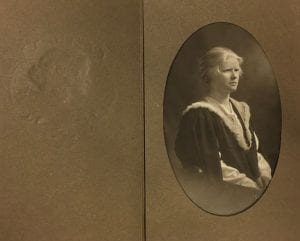Intern Profile, Adelaide Greig, Archives and Special Collections Blog Intern
Adelaide Greig recently completed an Internship with Archives and Special Collections, and is completing her Masters in Arts. She spoke to us about how she came to work with our collections and the new skills she was able to gain during her time working with our team.
What is your academic background?
I’m currently working on a Masters Thesis within the English and Theatre Studies department, with a focus on medieval romance by female writers. I’m really interested in how elements of fantasy in those stories acted as a form of escapism for its writers and readers.
What path led you to undertaking an Internship in Archives and Special Collections?
I think gaining as much practical experience as possible is essential for moving into any career and I’m always on the look out for any opportunities within special collections. I jumped on the chance to intern with the Baillieu and help out in any way I can; their collections are so impressive, how could I say no!
How will you the skills you use now be helpful for the future?
I’ve mostly been writing for the Special Collections blog, which requires presenting short form and entertaining but educational writing for a wider audience, something that I don’t really get a chance to do for my thesis research. It feels helpful to develop writing skills that will come in handy for curatorial work, or other positions which require sharing collections with the general public.
What do you see as your options for next steps from here?
Well, I guess I’ll keep plugging away on my thesis and interning anywhere I can and hopefully one day it will turn into a career.
Something unusual I’ve discovered in the collections is….
The catalogue entries for every item have a brief history of from where the item was purchased; some of them are quite complex and have passed through many hands. I’d love to dig deeper into those histories and learn more about how they finally landed in the Baillieu, which being in Melbourne is quite far from where they started!
As told to Chelsea Harris, Coordinator, Communications and Engagement
Feature image: Chaucer’s Squires Tales to the Tree She Goth Ful Hastily, James Heath, etching and burin, 1801, Print Collection, Gift of Dr J. Orde Poynton, 1959.5019.000.000







